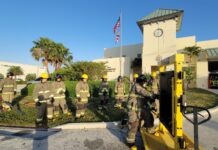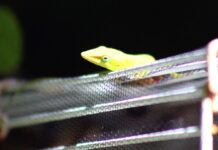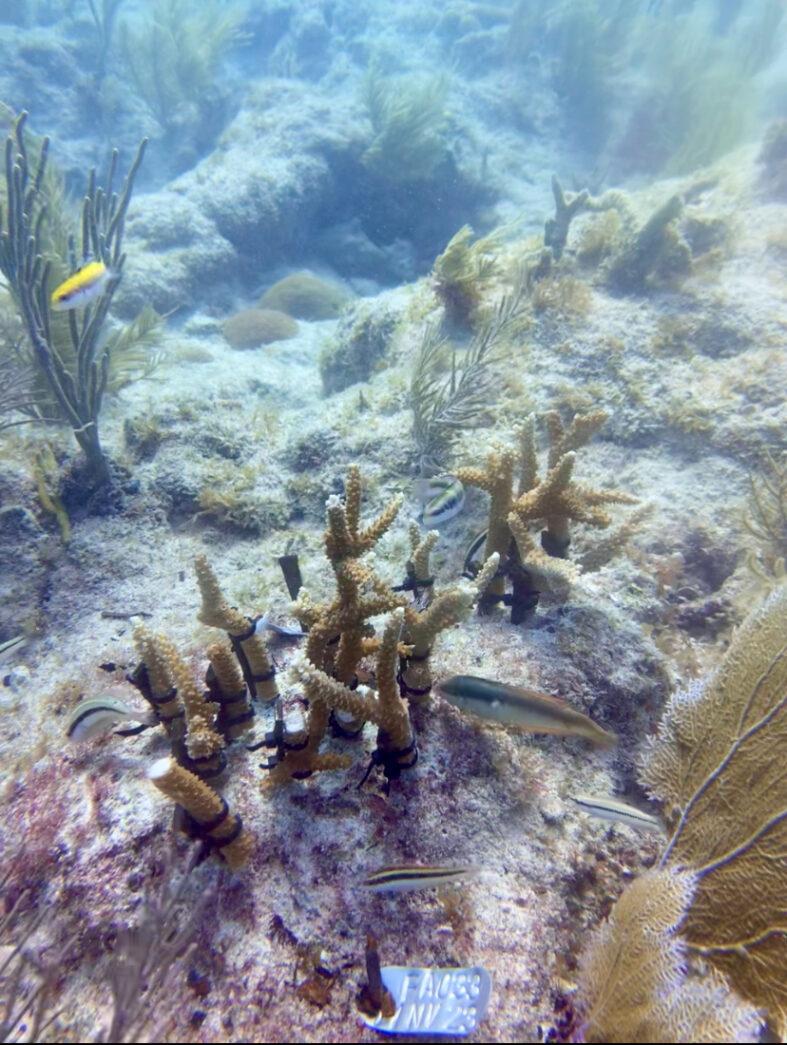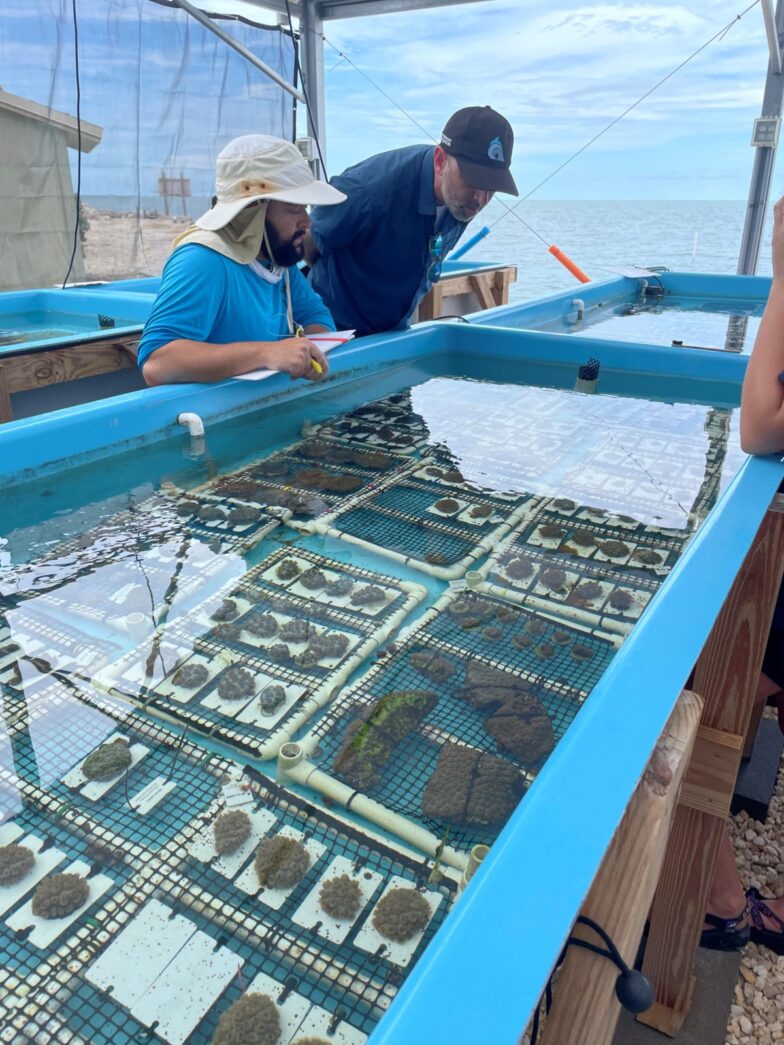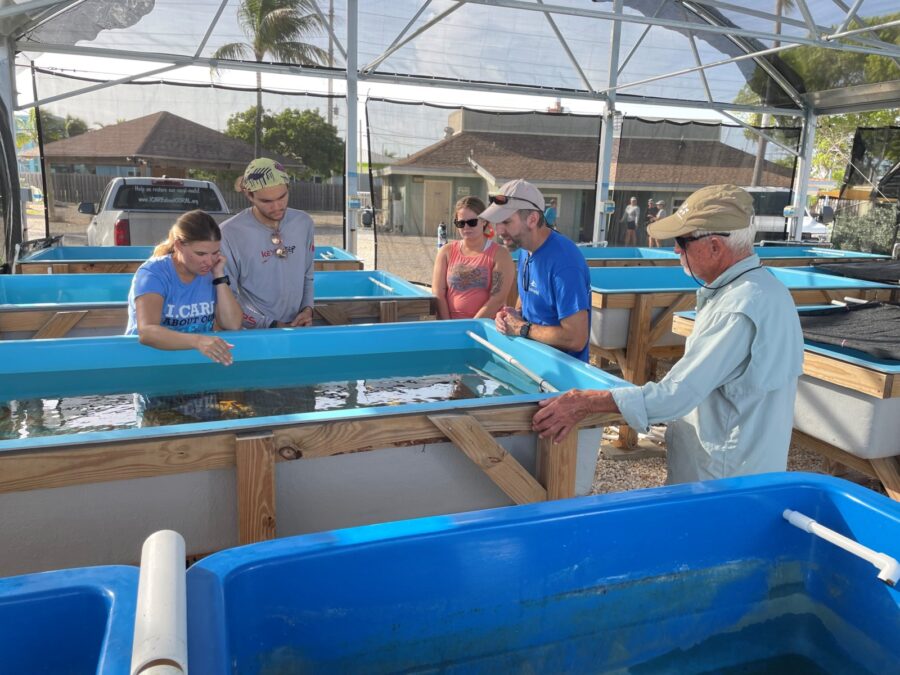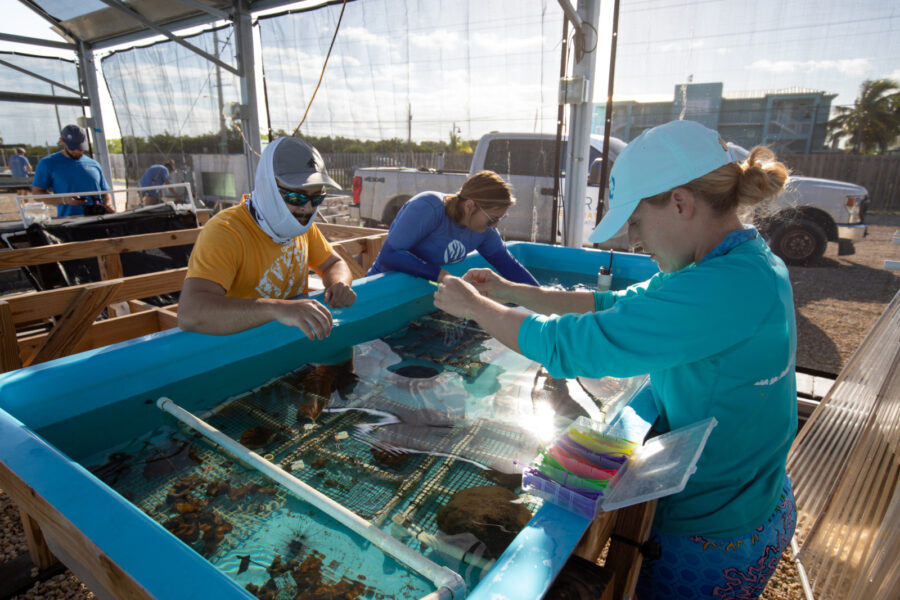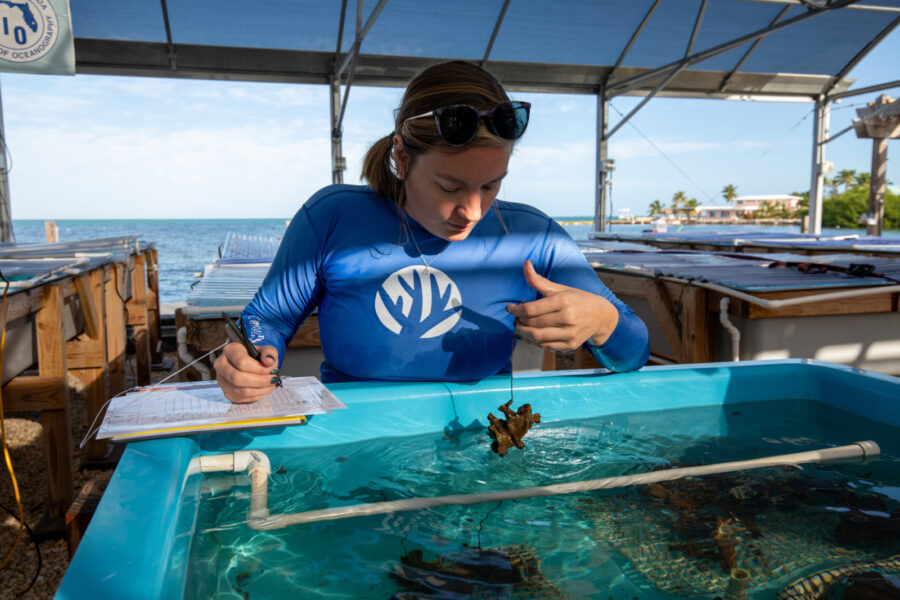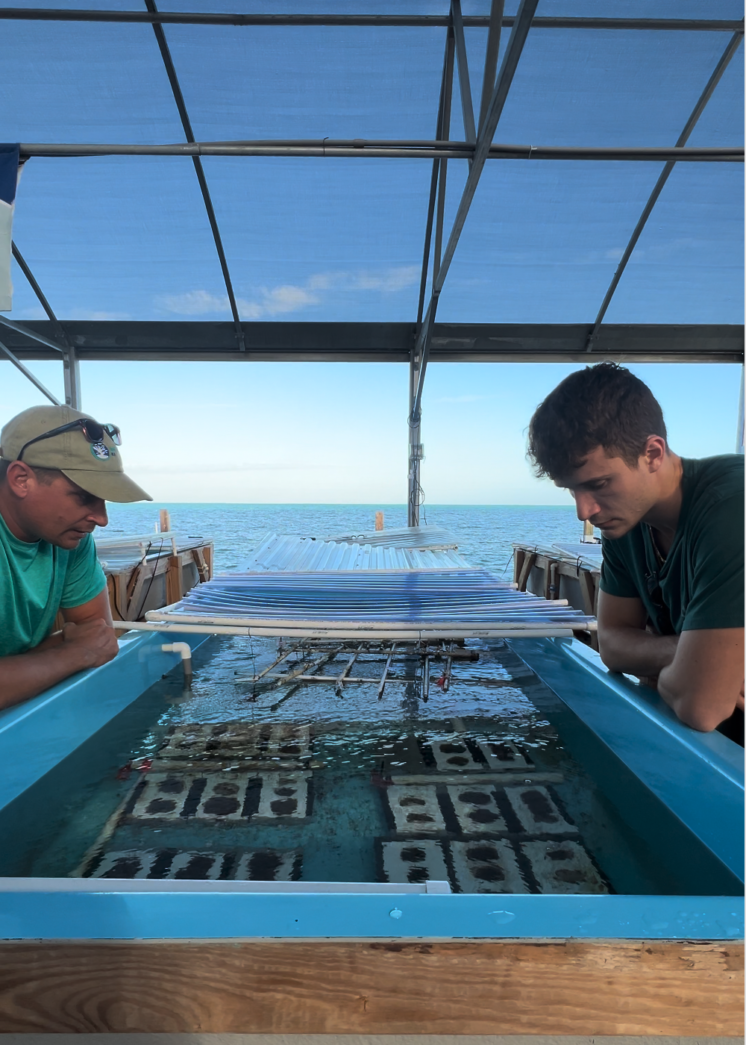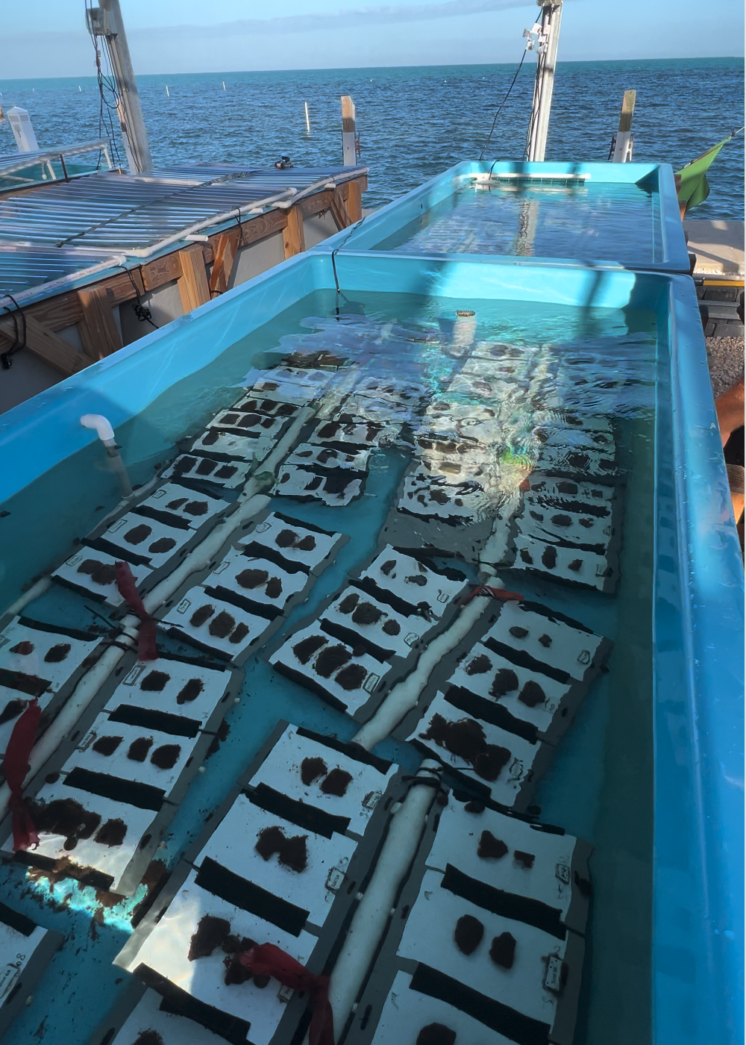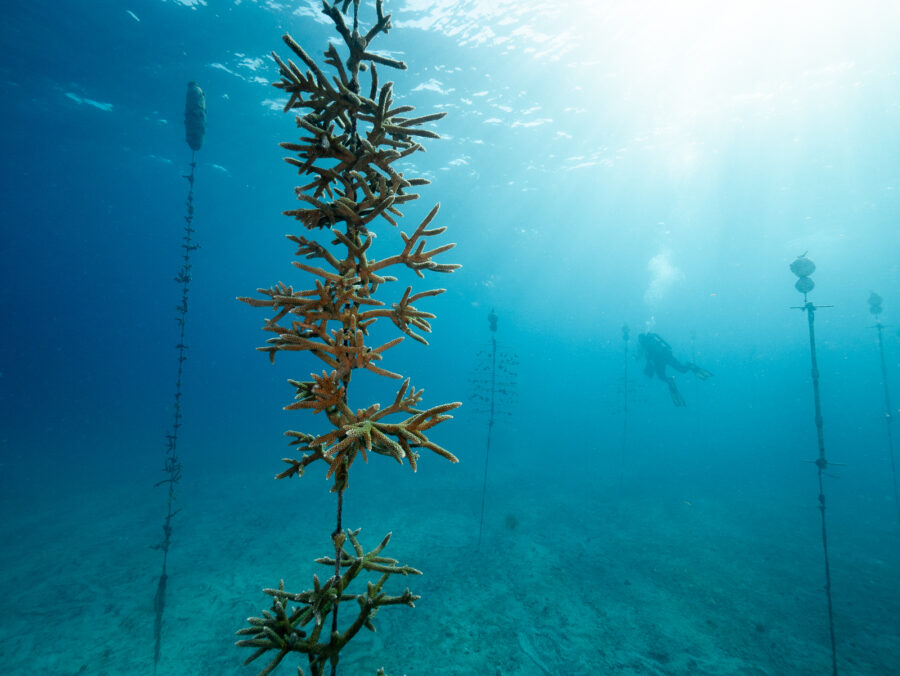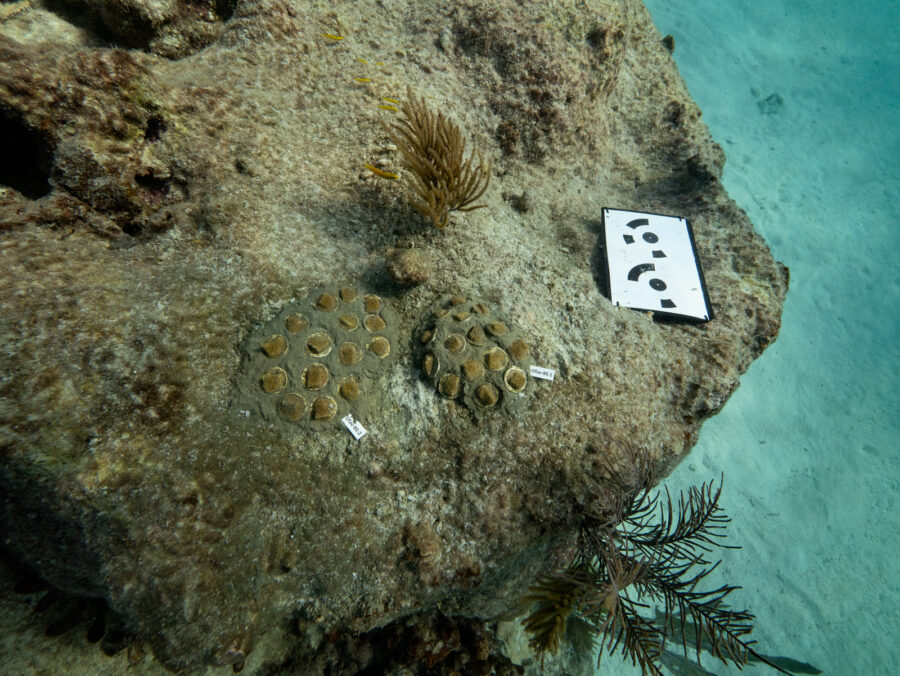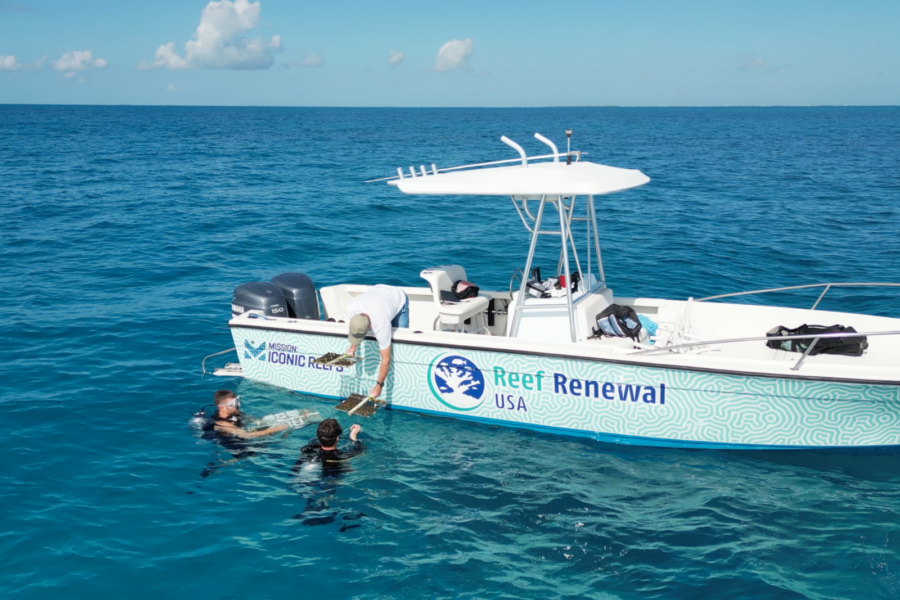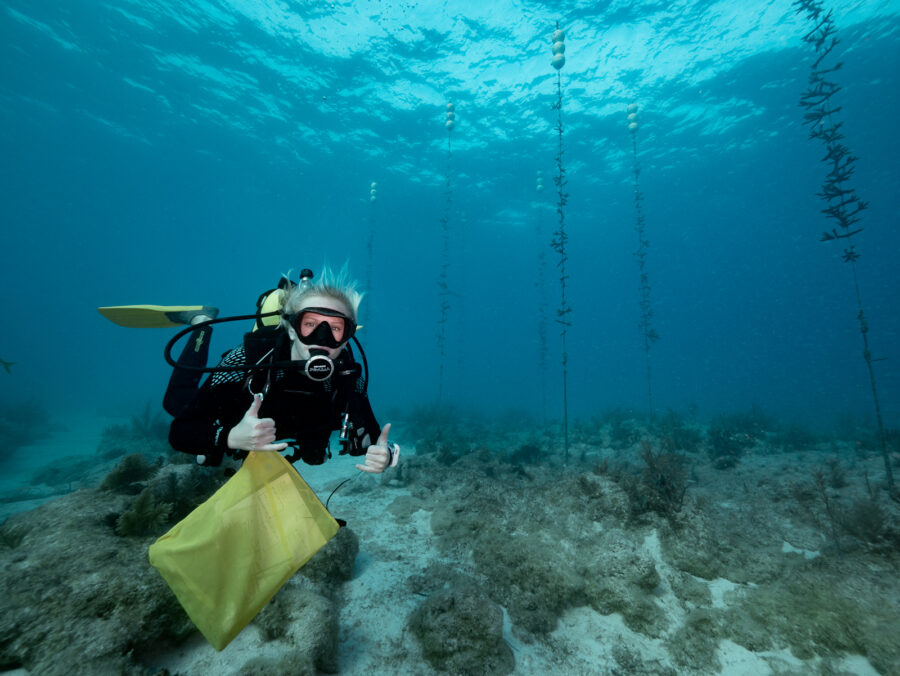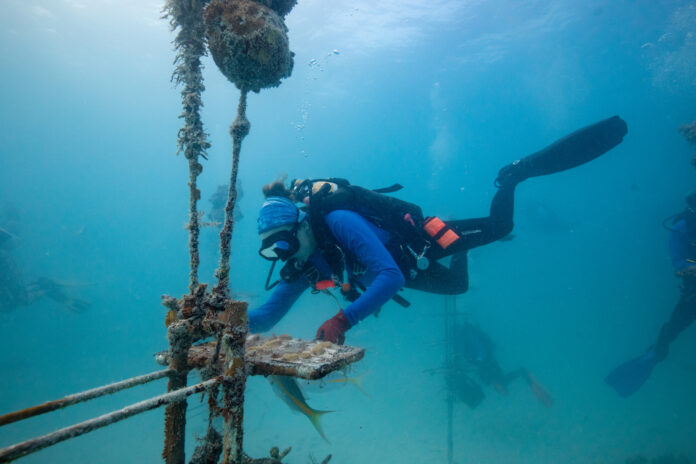
“This is the good news story everyone needs,” said a smiling Cindy Lewis, the director of Florida Institute of Oceanography’s Keys Marine Laboratory (KML) in Layton. “We bustled the corals onshore and protected them, and now they get to go back home.”
Hosted by University of South Florida, KML served as a refuge for thousands of endangered corals during a historic marine heat wave. Ocean waters in June and July typically register at 85 degrees Fahrenheit; this year, readings hit a blistering 92 to 97.
The corals took a beating. Mass bleaching on a scale never before witnessed and coral loss in several offshore coral nurseries and outplanting sites forced Florida Keys coral restoration organizations to make the unprecedented decision to move their coral stocks, from which NOAA’s Mission: Iconic Reefs and other critical restoration efforts draw, into land-based tanks and deepwater nurseries.
Most leaned on KML as their land-based partner to help safeguard their most important genotypes and broodstock. Since their rescue, these corals have been recuperating and rehabilitating in KML’s state-of-the-art seawater systems and raceways. Now, the corals are finally ready to return to their offshore nurseries.
Several milestones still have to occur before the thermally-stressed corals can be outplanted, including:
• Sustained ocean temperatures on the reef below 86.9 degrees Fahrenheit for at least one week; this likely did not occur in the Keys before Oct 15.
• Removal of all dead and/or diseased corals from nurseries and preparation of such to receive rescued corals.
• In-person inspection of all corals held in land-based facilities by an approved coral health veterinarian within 30 days of proposed relocation.
• 30-day quarantine in nurseries with continued monitoring and reporting to FWC before any outplant activities to the wild reef.
Right now, organizations are returning their first few batches of rescued corals back to the ocean. “This move represents renewed hope for the future of coral reefs in the face of the extraordinary environmental challenges presented by climate change,” noted a Coral Restoration Foundation (CRF) blog post. Close to 1,000 CRF corals remain at KML, with returns to the Tavernier nursery hopefully scheduled for Nov. 20-30.
Except for a “small handful” of corals that didn’t pass inspection, Reef Renewal USA has moved all its KML corals back to their Looe Key nursery, said founder Ken Nedimyer. In August, Reef Renewal also moved much of its stock to novel, pop-up nurseries in deeper water to beat the heat. They’ve begun moving some of these ropes full of coral stock back to shallower nurseries to monitor their response. In total, they have 60 ropes of Acropora coral and six trees of mixed species that need to migrate shallower. Pending good weather, they plan to do so within the next week.
“We’re glad we were able to preserve the genetic diversity we have spent so much time collecting and propagating,” Nedimyer said.
Once cleared of quarantine, the rescued and returned corals can rejoin restoration programs, eventually getting grown out and fragmented to produce more stock that will supply outplant efforts, said I.CARE founder Kylie Smith.
In the meantime, her organization is getting creative. “Sea water temperatures have finally come down to a level that is no longer stressful for corals, which ended the moratorium on outplanting,” said Smith. So as of Nov. 11, I.CARE officially resumed transplanting trips, using coral fragments which were reared at the Florida Aquarium in Tampa. These never experienced thermal stress, so the return protocols don’t apply to them.
“It feels so great to be able to get corals in divers’ hands again and start the process of rebuilding our reef. After such a heartbreaking summer, it feels amazing to work with healthy corals and to see the color coming back to the reef,” Smith said. I.CARE currently has about 900 fragments from five different species to transplant over the coming months while waiting for rescued corals to clear quarantine.
“There will be a need again,” Lewis concluded. “It is not if, but when, the next thermal stress and bleaching event occurs. And we anticipate that they will happen at increasing frequency due to climate change.”
To be prepared, she and others emphasized lessons learned: proactively moving small subsets of corals in June, “well before the heat of summer arrives,” Nedimyer said; optimizing restoration efforts with corals that show more resistance to heat stress, he and Smith added; increasing capacity to house corals, cementing a strong network of collaboration with all restoration partners and finding funding sources for all partners for emergencies, Lewis said.




